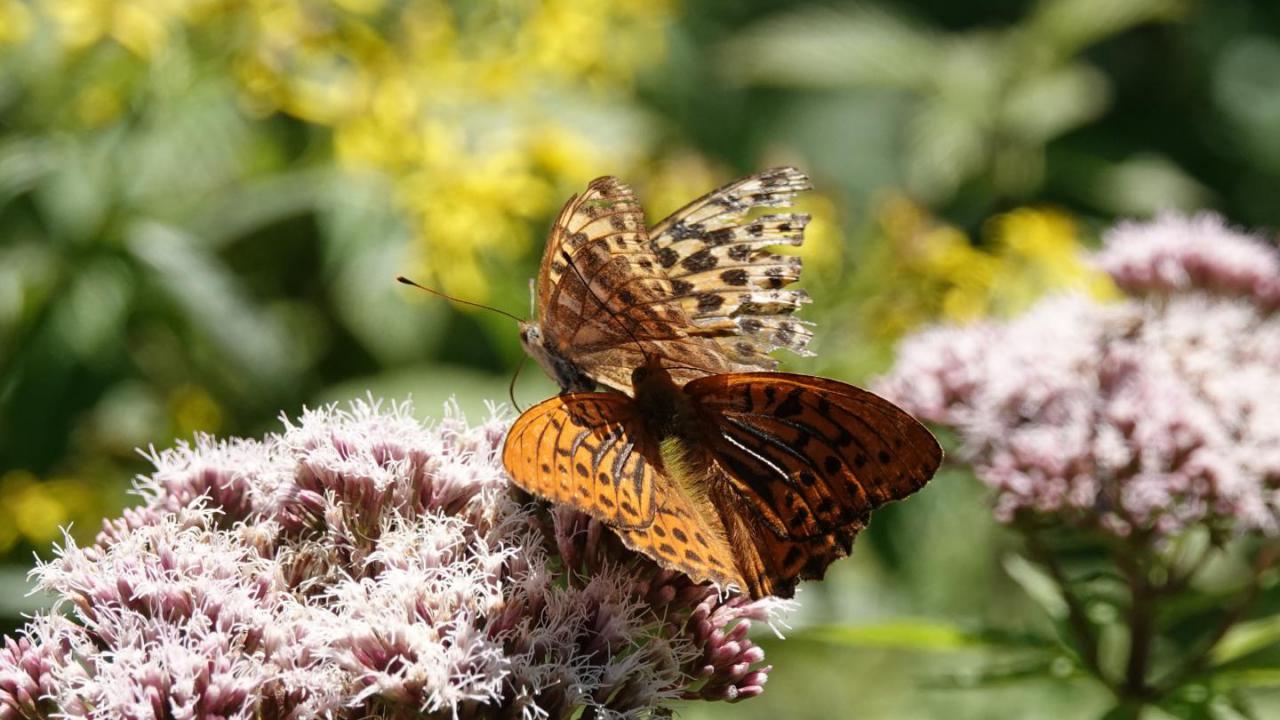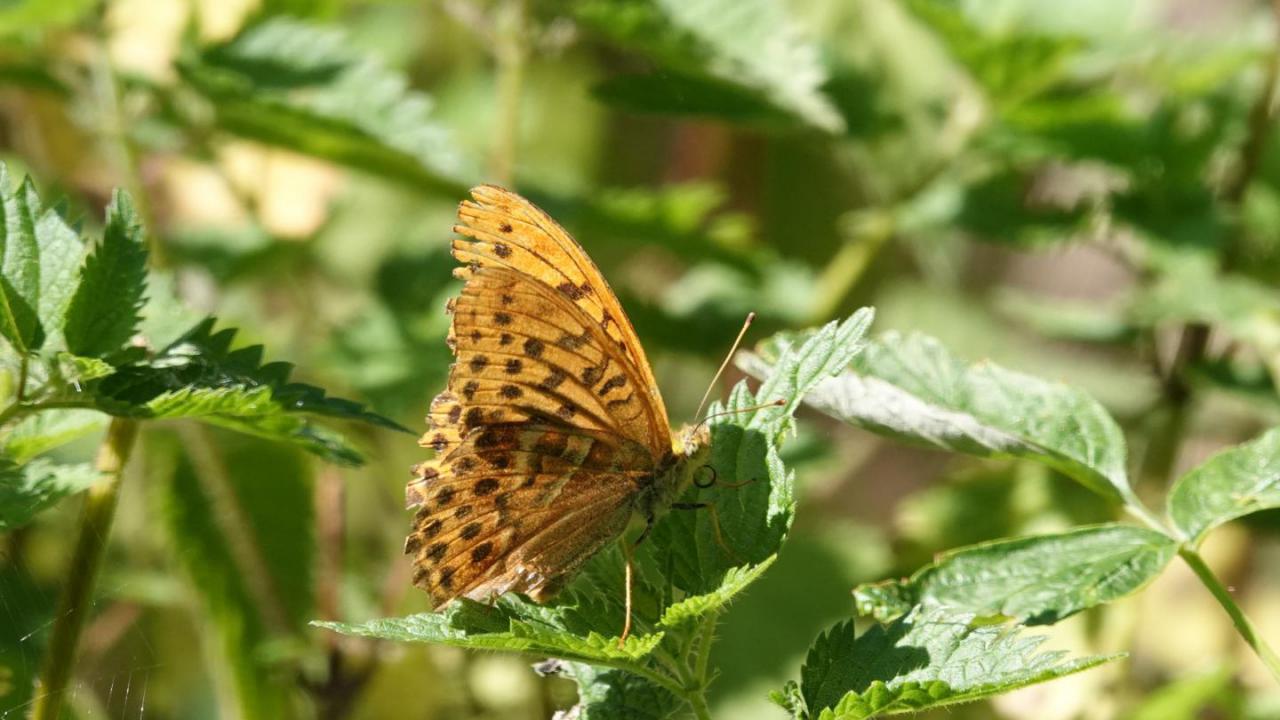Description:
The male of this large orange butterfly has thick black scent stripes on the top of the forewings that run along the veins.
Some females have a yellowish-gray upperside instead of orange (see 1st & 2nd photo).
The underside of the hindwing is greenish with white stripes.
There are quite a few orange butterflies in Europe, although different in size, with very similar black markings:
- High Brown Fritillary (Argynnis adippe),
- Cardinal (Argynnis pandora),
- Niobe Fritillary (Argynnis niobe),
- Dark Green Fritillary (Speyeria aglaja),
- Weaver`s Fritillary (Boloria dia),
- Small Pearl-bordered Fritillary (Boloria selene),
- Marbled Fritillary (Brenthis daphne),
- Lesser Marbled Fritillary (Brenthis ino),
- Queen of Spain Fritillary (Issoria lathonia),
- Knapweed Fritillary (Melitaea phoebe),
- Spotted Fritillary (Melitaea didyma),
- Heath Fritillary (Melitaea athalia),
- Southern Heath Fritillary (Melitaea celadussa), and
- Glanville Fritillary (Melitaea cinxia).
The best way to distinguish them from each other is by looking at the underside of the hindwings.
Most of them have small white spots or other distinguised markings on the underside of the hindwings.
The Silver-washed Fritillary has no white pearly spots on the underside of the hindwings.
The Silver-washed Fritillary is found in almost all of Europe and lives in mixed and coniferous forests.
1st, 2nd & 3rd photo: Monschau (near the river Schlüsselbach), North-Rhine Westphalia, Germany, 7 August 2022
4th & 5th photo: Schafbachtal, Blankenheim, North-Rhine Westphalia, Germany, 8 August 2022





